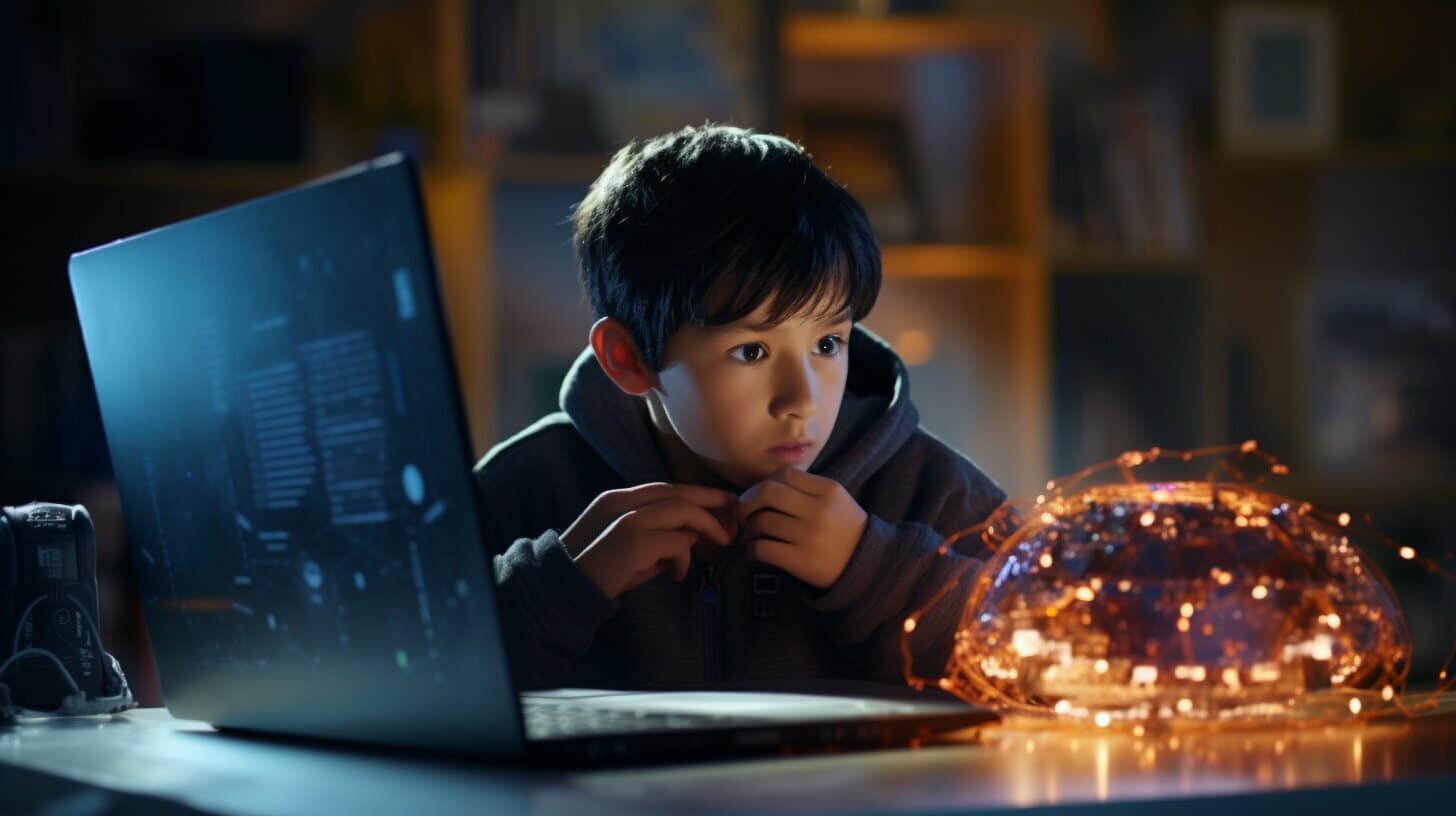Programming languages are becoming increasingly important in today’s tech-driven world. As a parent or educator, it’s essential to equip your child with the skills and knowledge required to succeed in a digital age. Python R is a popular and versatile programming language that is easy to learn, making it an excellent choice for introducing children to programming.
This guide will provide you with simple steps on how to explain Python R to a 10-year-old child. We will show you how to make programming basics fun and engaging for children, with interactive learning tools, visual programming techniques, and hands-on projects. You’ll find that teaching your child Python R doesn’t have to be complicated or boring; it can be exciting and rewarding for both of you.
Key Takeaways:
- Python R is a user-friendly and versatile programming language that is suitable for children.
- Teaching Python R to children can be made easy and fun with interactive learning tools, visual programming techniques, and hands-on projects.
- Learning Python R can be rewarding and beneficial for children in their academic and professional journeys.
What is Python R and Why It’s Great for Kids
If you’re wondering what Python R is, it’s a programming language that is widely used by professionals in data science, machine learning, and statistical computing. However, Python R is also an excellent language to introduce kids to programming basics.
What makes Python R a great language for kids to learn? First and foremost, it has a user-friendly syntax that is easy to understand and write. This means that kids can start writing simple Python R programs right away, without getting bogged down by complex syntax rules.
Python R is also a versatile language that can be applied to a wide range of fields, from web development to scientific simulations. This means that kids can explore various programming domains and discover their interests and strengths.
Another reason why Python R is great for kids is that it encourages creativity and problem-solving. With Python R, kids can bring their imaginative ideas to life by building programs that can create art, simulate real-world scenarios, or play games. This makes learning programming a fun and engaging experience for kids.

Overall, Python R is a fantastic language to introduce kids to programming. Its user-friendly syntax, vast applications, and opportunities for creativity and problem-solving make it an excellent choice for parents and educators who want to spark kids’ interest in programming.
Making Python R Simple and Fun for Kids
Teaching programming to children can be challenging, especially if they are just getting started. Fortunately, there are many ways to make Python R simple and engaging for kids.
One of the most effective methods is by using interactive learning tools, such as Codecademy, which provides a wide array of online exercises and quizzes. Another great tool is Scratch, which allows children to create animated stories and games using drag-and-drop blocks.
Visual programming techniques can also be useful in teaching Python R to children. For example, using flowcharts and diagrams can help them understand the logic behind coding and how different components interact with each other.
Hands-on projects are another effective way to teach Python R to children. These projects can be as simple as creating a calculator or as complex as building a robot. Projects that allow children to create something tangible and functional can be highly motivating and rewarding.
| Tip | When teaching Python R to children, keep the lessons short and focused. Break down complex topics into smaller, more manageable pieces, and use relatable examples that children can understand. |
|---|

Remember that children learn best through play and exploration. Encourage them to experiment and try new things, and provide plenty of positive feedback and support along the way.
Breaking Down Python R Basics for Kids
Introducing programming concepts to children can be challenging, but breaking down the basics of Python R into simple and relatable terms can make it easier for kids to grasp. Here, we’ll explore some of the key concepts of Python R that you can teach your child.
Variables
Variables are one of the fundamental concepts in programming. They’re containers that hold data, such as numbers or text, which can be used later in the program. For example, you could use a variable called “name” to store a person’s name, like this:
name = “John”
Data Types
Data type is another important concept in programming. Python R supports various data types, including integers, floating-point numbers, and strings. Integers are whole numbers, like 1, 2, 3, while floating-point numbers are decimal numbers, like 1.5, 2.25, and strings are text, like “hello world!”
Loops
Loops are used to repeat a block of code multiple times. One of the most common types of loops is the “for” loop. It allows you to iterate over a sequence of items, such as numbers or strings. For example, this loop prints the numbers from 1 to 5:
for i in range(1, 6):
print(i)
Conditionals
Conditionals are used to make decisions in a program. The “if” statement is one of the most common types of conditionals. It allows you to execute certain code only if a certain condition is true. For example, this code checks if a number is greater than 10:
if num > 10:
print(“The number is greater than 10.”)
Functions
Functions are reusable blocks of code that perform a specific task. They’re useful for avoiding repetition and keeping your code organized. For example, this function adds two numbers together:
def add_numbers(num1, num2):
result = num1 + num2
return result
By teaching these basic concepts in Python R, you can help your child develop a strong foundation in programming that they can build on in the future.
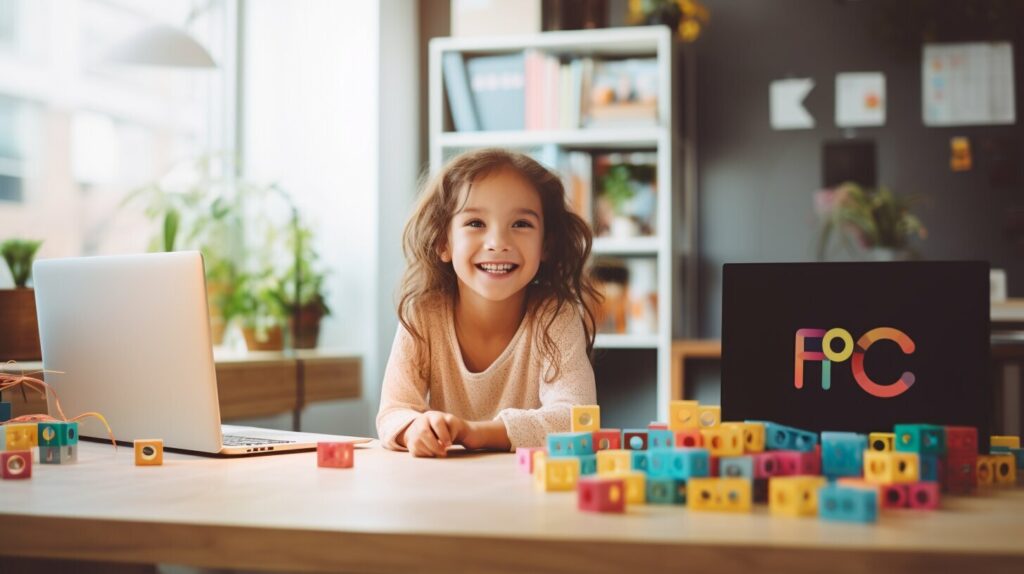
Engaging Activities to Learn Python R
Learning to code can be fun and exciting for kids with the right activities and resources. Here are some engaging ways to help your child learn Python R:
| Activity | Description |
|---|---|
| Code Combat | A coding game that teaches Python R basics through fun and interactive challenges. |
| Turtle Graphics | A visual programming language that uses Python R to create colorful designs and animations. |
| Python R for Kids | A book that provides a kid-friendly introduction to Python R programming with lots of examples and activities. |
| Code.org | An interactive platform that offers free coding lessons for all ages, including Python R basics. |

These activities can help your child practice and reinforce their Python R skills while having fun and staying engaged. By using creative and interactive learning tools, you can help your child approach programming in a positive and enjoyable way.
Resources for Learning Python R
If you’re looking for resources to help your child or student learn Python R, there are plenty of options available online and offline. Here are some of the best resources to help you get started:
| Resource | Description |
|---|---|
| Scratch | A visual programming language designed for kids to create interactive stories, games, and animations. Scratch is a great way to introduce children to coding concepts and encourage creativity. |
| Code.org | A non-profit organization that offers free coding courses, tutorials, and resources for beginners. Code.org has a special section for kids where they can learn Python R and other programming languages. |
| Codeacademy | An interactive online platform that provides coding courses for all levels. Codeacademy’s Python R course is specifically designed for beginners and has interactive exercises and quizzes to reinforce learning. |
| Python for Kids: A Playful Introduction to Programming | A book by Jason R. Briggs that introduces kids to programming basics using Python R. The book offers step-by-step guidance and fun projects to help children learn at their own pace. |
| Python for Everybody | Another book that provides a comprehensive introduction to Python R for beginners. The book includes interactive exercises and quizzes that reinforce learning and practical examples of Python R applications. |
These resources are just a few examples of the many options available to help children learn Python R. You can also find coding communities, online forums, and coding camps that offer support and guidance for young learners.

Real-World Applications of Python R
Python R is widely used in various fields, making it a highly versatile and sought-after programming language. Here are some exciting examples of how Python R is used in the real world:
| Field | Applications |
|---|---|
| Data Science | Python R is heavily used in data analysis, machine learning, and visualization. With its extensive libraries and frameworks, it enables efficient and accurate processing of large datasets, making it invaluable in research and industry settings. |
| Robotics | Python R is used to control robotic systems, as it allows for precise and flexible programming of movement, sensors, and processing. This makes it applicable in manufacturing, medicine, and exploration. |
| Game Development | Python R can be used to create games, from simple puzzles to complex simulations. With its powerful graphics and audio capabilities, it enables developers to create immersive and engaging experiences. |
| Scientific Simulations | Python R can be used in scientific research to model and simulate complex systems, from weather patterns to biological processes. Its scalability and accessibility make it a popular choice for researchers and academics. |
If your child is interested in any of these fields, learning Python R can pave the way for exciting and fulfilling career opportunities!

Inspiring Stories of Young Python R Programmers
If you’re looking for inspiration to help your child get excited about programming with Python R, look no further than these young prodigies. These young programmers have achieved incredible things with Python R, demonstrating the limitless possibilities of this programming language. Here are some of their stories:
Aditya Choudhary
Aditya Choudhary is a 12-year-old software developer who has created multiple Python R programs, including an augmented reality app that helps children learn about the solar system. Choudhary’s innovative use of Python R shows how the language can be used to create engaging and educational experiences.
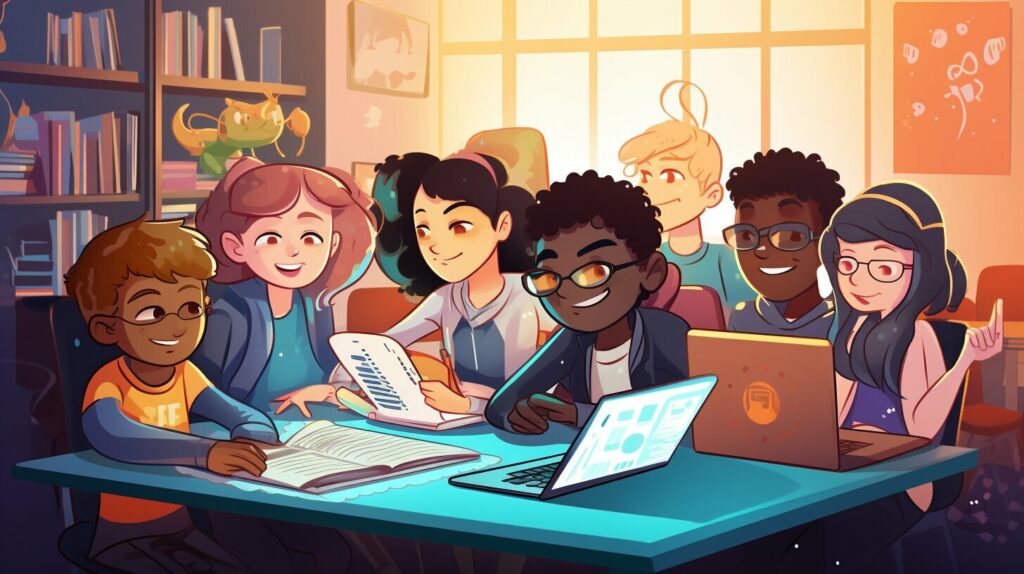
Mason Goh
Mason Goh is a 9-year-old programmer who learned Python R in just a few months and created a machine learning program that uses image recognition. Goh’s impressive project shows how children can quickly pick up programming skills and apply them in creative ways.
Samaira Mehta
Samaira Mehta is an 11-year-old programmer who has created a board game that teaches children how to code in Python R. Mehta’s game, called CoderBunnyz, has won multiple awards and has been used in schools across the United States to teach programming basics to children.
“One of the best ways to learn is to teach others.”
These young programmers are proof that children can accomplish amazing things with Python R. By encouraging your child to explore their creativity and experiment with Python R, they could be on their way to becoming the next programming prodigy.
Practical Tips for Parents and Educators
Teaching Python R to children can be a rewarding and exciting experience, but it can also present some challenges. Here are some practical tips to help you support your child’s learning:
- Start with the basics: Introduce the fundamental concepts of Python R, such as variables and loops, before moving onto more complex topics. Use real-life examples to make the concepts more relatable to children.
- Encourage experimentation: Give children the freedom to try out different approaches to coding and explore their own ideas. This can help build their confidence and foster their creativity.
- Provide guidance: Be available to answer your child’s questions and provide guidance when they need it. However, avoid giving them the answers too quickly, as this can hinder their problem-solving skills.
- Use interactive resources: There are many interactive resources available that can make learning Python R more engaging and fun. Look for coding games, challenges, and online tutorials that your child might enjoy.
- Foster a growth mindset: Encourage your child to persevere through challenges and mistakes, and emphasize that failure is a natural part of the learning process. This can help build their resilience and motivation.
By following these tips, you can help your child develop a solid foundation in Python R and prepare them for a future in programming or any other fields that require problem-solving skills.
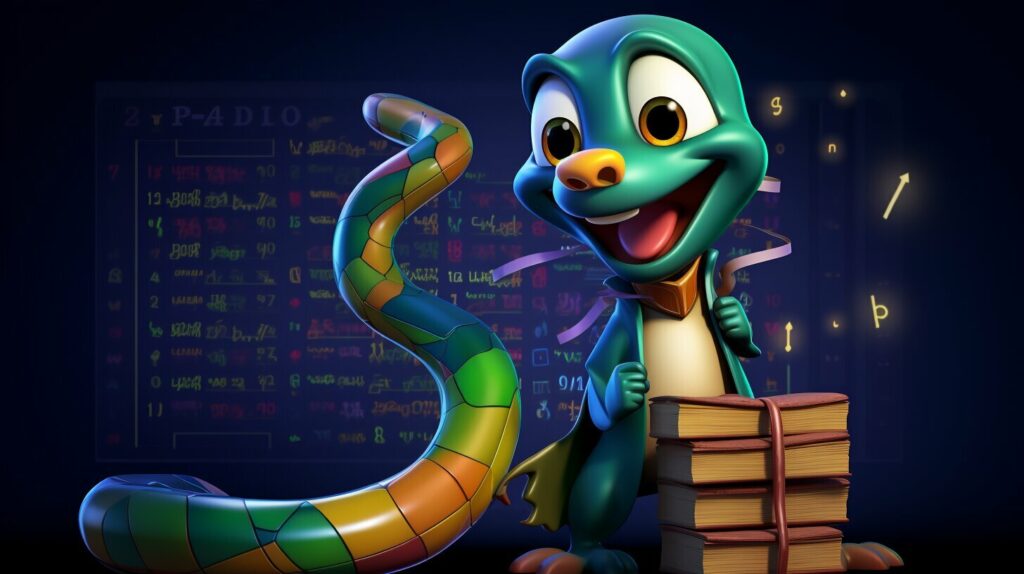
The Future of Python R and Its Benefits
Python R is a programming language that is becoming increasingly popular, and its versatility and ease of use make it an ideal tool for children to learn. As technology continues to advance, the demand for programming skills is on the rise, making the knowledge of Python R a valuable asset for future academic and professional pursuits.
Learning Python R can benefit children in many ways. It can improve their analytical skills, problem-solving abilities, and creativity while fostering a growth mindset and resilience. These skills are desirable in many fields, including computer science, engineering, data analysis, and scientific research.
Moreover, Python R has vast applications in various industries, such as finance, healthcare, and automation, offering numerous career opportunities for those who master it. In fact, some of the world’s most successful companies, such as Google, Netflix, and NASA, use Python R for their operations, demonstrating its importance and relevance in the modern world.
Overall, learning Python R is a wise investment in your child’s future. It can open up new opportunities, enhance their problem-solving skills, and equip them with valuable abilities that will serve them well throughout their academic and professional journey.

Frequently Asked Questions about Python R for Kids
If you’re considering introducing your child to Python R, you may have some questions about how to get started. Here are some common questions and answers to help you feel confident in your decision:
Is Python R too complex for children to learn?
Not at all! Python R is a user-friendly programming language with simple syntax that is easy for children to understand. With a clear and engaging approach, children can quickly grasp the basics of Python R and build their programming skills.
What age is appropriate for learning Python R?
Python R can be taught to children as young as 8 or 9, although the ideal age range varies depending on the child’s aptitude and interest. With guidance and support from parents or educators, even young children can start learning Python R and develop a passion for programming.
What resources are available for teaching Python R to kids?
There are many excellent resources available online for teaching Python R to children. Interactive websites, coding games, and visual programming tools can help make the learning process fun and engaging. Books and online tutorials can also provide valuable guidance and support.
What are the real-world applications of Python R?
Python R has a wide range of applications in various industries, including data analysis, scientific simulations, game development, and robotics. By learning Python R, children can explore their interests, develop problem-solving skills, and prepare for future careers in STEM fields.
How can parents and educators support children in learning Python R?
Parents and educators can support children in learning Python R by offering guidance, encouragement, and resources. By fostering a growth mindset and encouraging experimentation and creativity, they can help children build confidence in their programming skills and pursue their interests.
What are the benefits of learning Python R for children?
Learning Python R can have many benefits for children, including developing critical thinking and problem-solving skills, improving logical reasoning and analytical skills, and preparing for future careers in STEM fields. By engaging in fun and exciting projects, children can also build their creativity and teamwork abilities.
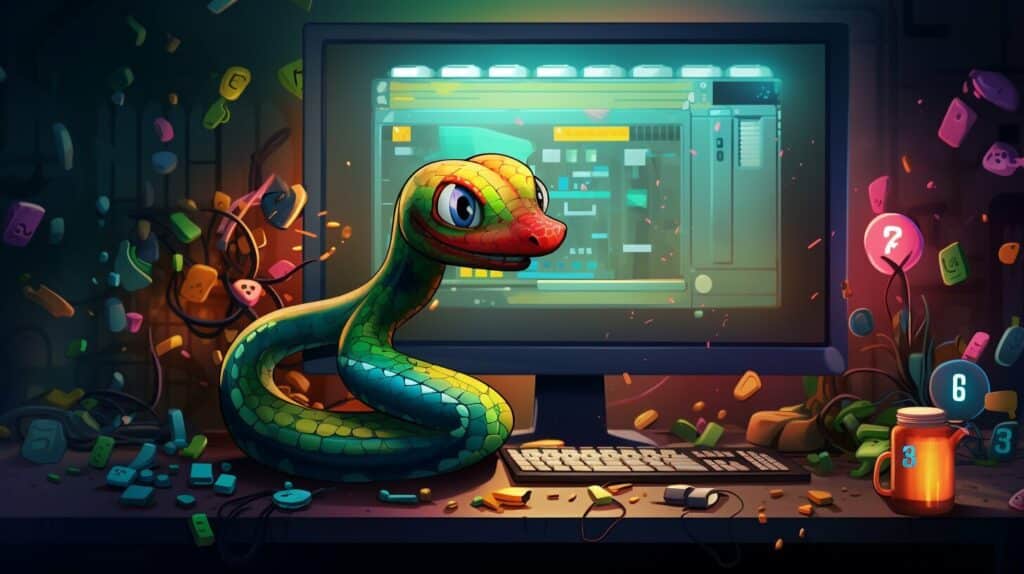
Conclusion
Congratulations! You have now learned how to explain Python R to a 10-year-old child. Introducing children to programming at a young age can have a significant impact on their cognitive and creative development, and Python R is an excellent language to start with.
Remember to keep things simple and engaging, and use interactive tools and projects to make learning fun. There are many resources available online that can help you support your child’s programming journey, from tutorials and books to coding communities and camps.
As you explore the world of Python R with your child, you may be amazed at the endless possibilities it offers for problem-solving, creativity, and innovation. From data analysis and robotics to game development and scientific simulations, Python R has applications in countless fields.
Keep Learning and Growing
The future of technology and innovation is bright, and by providing your child with the skills and confidence to code, you are setting them up for success in the years to come. Keep encouraging experimentation, creativity, and a growth mindset, and watch as your child develops new talents and passions.
Thank you for taking the time to learn about Python R and its benefits for children. We wish you and your child all the best on your programming journey!
Can the Easy & Fun Guide for Parents also be used to explain Python R to a 10-year-old child?
The Easy & Fun Guide for Parents may not be the best choice to explain Python R to a 10-year-old child. However, if you are looking for an easy guide to explaining ram, this resource might be helpful. Python R is a programming language that could be too complex for a young child, but RAM, which stands for Random Access Memory, refers to a computer’s temporary storage and can be simplified for easier comprehension.
Are Neural Networks and Python R Similar Concepts That Can Be Explained to Children?
Children can grasp the concepts of neural networks and Python R, although they differ. Neural networks are simplified models of the human brain, while Python R is a programming language. You could provide an easy neural network explanation for children by likening it to a system where information travels between different points, just like when playing telephone.
Frequently Asked Questions about Python R for Kids
Q: Is Python R too complex for children to learn?
A: Not at all! Python R is designed to be beginner-friendly and easy to understand. With its simple syntax and clear structure, children can grasp the basics of Python R in a fun and engaging way.
Q: At what age can children start learning Python R?
A: Children as young as 8 years old can start learning Python R. However, the appropriate age may vary depending on the child’s interest and readiness. It’s never too early to expose children to the world of programming!
Q: What resources are available to help children learn Python R?
A: There are many resources available to support children in learning Python R. Online tutorials, interactive platforms, books, and coding communities provide guidance and support for beginners. These resources offer step-by-step instructions, practice exercises, and coding challenges to enhance learning.
Q: Can learning Python R lead to future career opportunities for children?
A: Absolutely! Programming skills, including Python R, are in high demand across various industries. By learning Python R at a young age, children can develop a strong foundation in programming and open doors to future career opportunities in fields such as data analysis, software development, and scientific research.
Q: How can parents and educators support children in learning Python R?
A: Parents and educators can play a crucial role in supporting children’s learning journey. They can provide guidance, encourage experimentation and creativity, and create a supportive learning environment. It’s important to foster a growth mindset and celebrate children’s progress to keep them motivated and excited about learning Python R.





